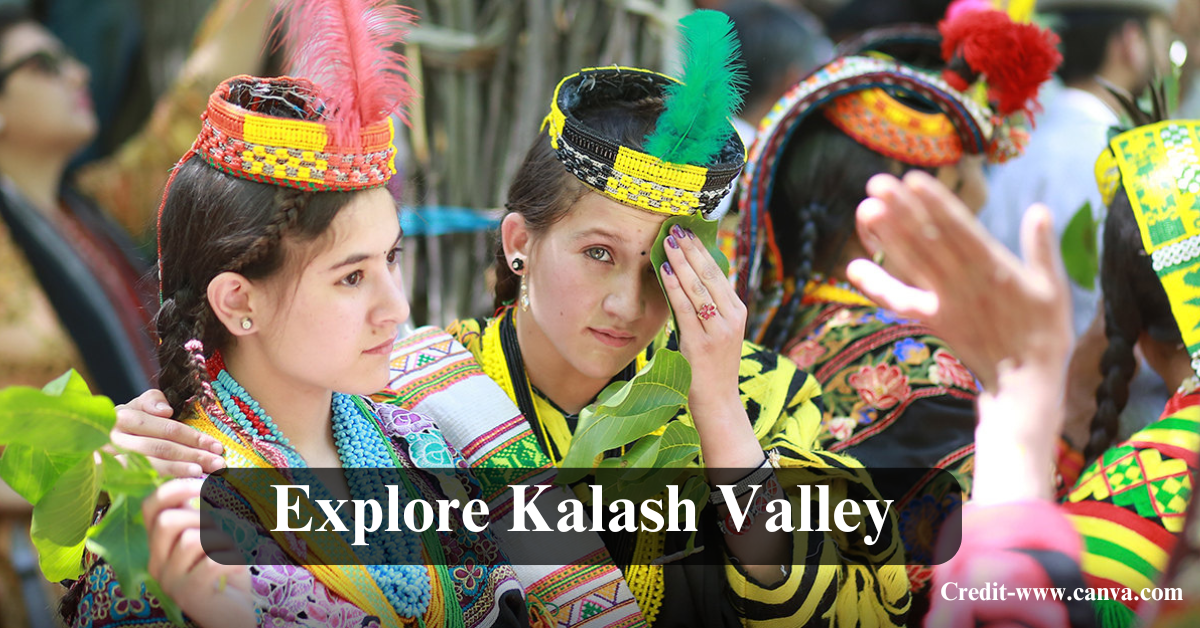A trip to the Kalash Valley provides a glimpse into the region’s rich history. The valley is located in the Hindu Kush mountains, comprising three small valleys: Bumburet, Rumbur, and Birir. People there still retain old customs and speak an ancient language; events celebrating these customs are vibrant and loud, leaving a lasting impression.
Kalash maintains its local character, unlike busy tourist areas. Travelers encounter people who have lived in these mountains for a long time; these residents accept visitors as if they were family members. The mountain air feels cool plus sharp, waking one up well.
This location presents more than just views – it shows a history that continues. The Kalash people hold onto their culture despite outside influence; they believe in spirits from nature, chant songs from memory, and transmit tales through their celebrations. This area functions as a community that continues to operate, rather than a museum.
Table of Contents
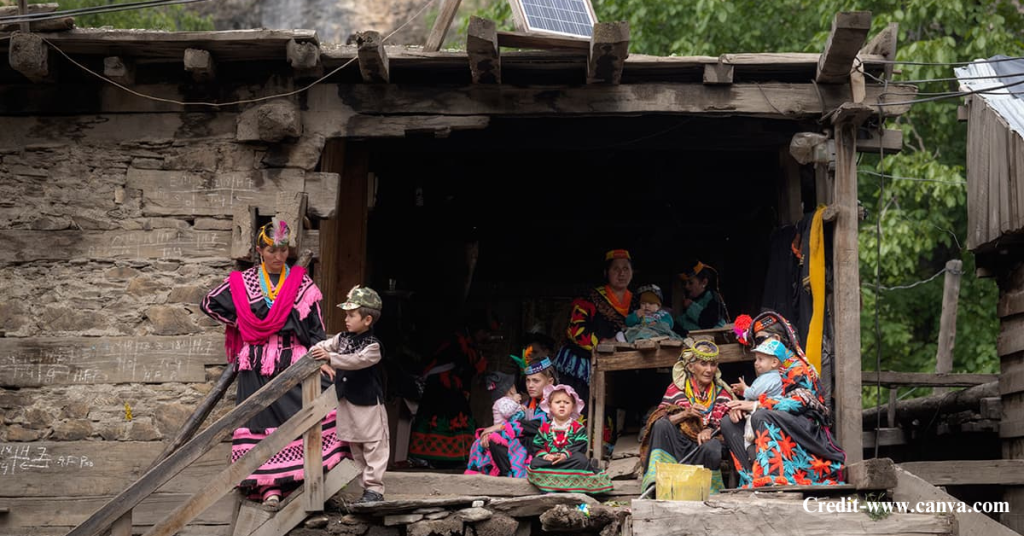
Best Time to Visit Kalash Valley
Festival Dates for 2025:
- Chilam Joshi: May 13–16 (spring festival with dances, songs, and flower crowns)
- Uchau: August 20–22 (harvest celebration with local foods)
- Choimus: December 15–22 (winter festival with rituals, bonfires, and goat sacrifices)
Each festival brings a different mood. Chilam Joshi is light and joyful, Uchao is cozy and food-focused, while Choimus feels profound and sacred. If one searches for stories, Choimus holds them. The villagers lit their torches there; they drummed in a circle and presented themselves to the changing weather. Booking for stays should be done at least six months in advance of the trip if one plans to attend a festival, to ensure good availability. Local homestays fill up fast. Tourists from around the world visit during these dates, so booking early helps you get a place closer to the action—and supports the families hosting you.
How to Reach Kalash Valley
Travel Routes
Itinerary 1 begins in Islamabad, proceeds via the Lowari to Chitral, and thereafter to the Kalash valley. This trip takes between twelve and fourteen hours plus has many lovely sights.
A second route takes people from Islamabad to Peshawar, then to Dir, and from there to Chitral, as well as to the Kalash Valley. This route is slightly faster, taking ten to twelve hours.
Both travel paths show impressive sights of northern Pakistan. On the drive, you will see rivers, hills, and small tea houses along the road. If you drive yourself, be prepared for rough sections of the road. Some streets lack pavement, and adverse weather conditions can cause people to wait in line.
From Chitral
Jeeps depart from near Bank Alfalah around 1:00 p.m. A ride costs between 200 and 300 Pakistani rupees.
Shared jeeps from Ayun cost about one hundred Pakistani rupees. Private cars can charge between 1,000 and 1,200 Pakistani rupees.
Foreign visitors pay an entry fee of six hundred Pakistani rupees. That money helps the local people. The small payment helps with items such as school supplies and language learning, in addition to preserving the culture.
What Makes Each Valley Special
Bumburet Valley:
- Most developed
- Home to Kalasha Dur Museum (built in 2005 with Greek help)
- Easier access, more guesthouses, but also more crowds
Bumburet often serves as the initial stop for most visitors. In this area, one finds more shops, small hotels, and local guides. If a person travels with children or needs steady facilities such as hot water and places to charge devices, Bumburet offers the most suitable choice.
Rumbur Valley:
- Quieter and traditional
- Great local homestays like Kalash Home Guest House (with food and homemade wine)
- Closer contact with the locals
Rumbur seems personal. You walk through narrow paths there. The paths go past farms and houses. People may ask you to sit for tea with them. This happens if you show respect plus curiosity. The valley also holds some quiet, personal festival gatherings. Birir Valley:
- Least visited
- Basic lodging only (e.g., Irfan Guesthouse)
- Perfect for nature lovers and people looking for a peaceful time
Birir does not suit all people – the place is far away and quiet. There are not many services there. However, if a person loves nature and wants to be in a place with little noise or traffic, this valley is ideal for them. Local guides bring visitors to high places and holy areas. Most tourists do not go to these spots.
Festival Fun: What to Expect
Chilam Joshi:
- Held in May
- Men play flutes, women dress up, and everyone joins in dances
- More organized in Bumburet, more personal in Rumbur
Sunshine and joy always make people sing, jump, and smile. Visitors should be allowed to join in, although it is courteous to ask first. A festival marks the advent of spring and the onset of a new life.
Uchau:
- August harvest festival
- Features walnut dishes, cheese, and dancing
- Great time to try local food
The Kalash people express gratitude for the season’s crops by celebrating with their finest dishes. You taste flavors that are unique to their part of Pakistan.
Choimus:
- December festival
- Full of rituals, singing, and community bonfires
- Locals wear traditional clothes and take part in goat sacrifices
Choimus is sacred and a bit more private. Foreign visitors can watch most parts, but some ceremonies are family-only. Still, it’s a powerful time to visit.
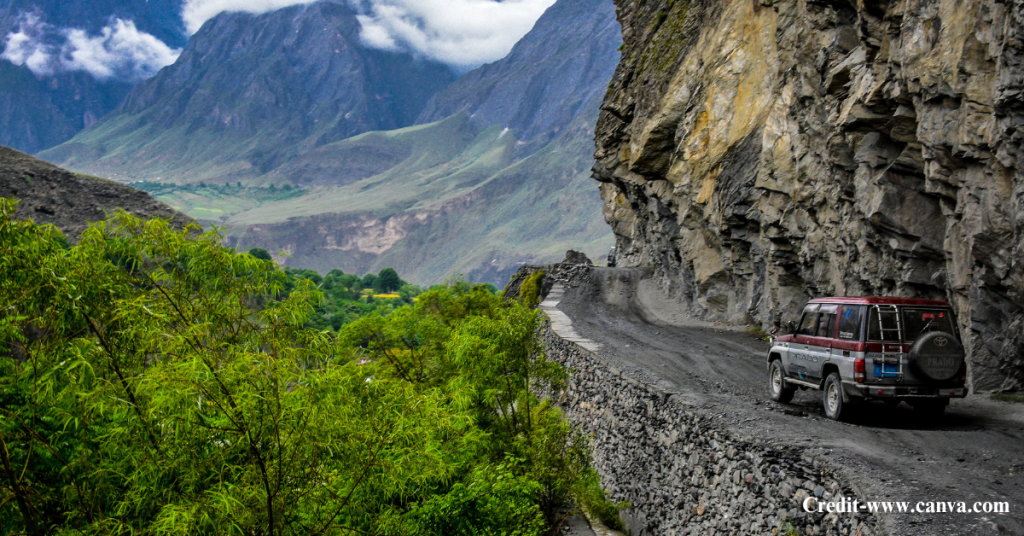
Culture and Traditions
According to Kalash beliefs, they are animists who respect nature, ancestral spirits, and a god called Dezau. The funerals are conducted in open-air cemeteries, where wooden totems are erected. Respect is shown by being there. Sometimes, food is offered, or songs are sung for the departed.
Kalasha is the name they give to their language. It is a rare language with the number of speakers being in the range of 5,000. Many guides tend to overlook this, but it matters because language is a core entity in shaping identity. Now the projects are being documented and taught to the younger generation.
Please always ask before you take pictures. Many local people dislike unexpected photos.
Local Clothing
Women wear black robes adorned with beads, and they often wear heavy headpieces.
* Men wear woolen “pakol” caps and waistcoats.
These clothes reveal their past, their beliefs, and their pride. A family gives these clothes to younger generations.
What to Eat in Kalash
Don’t miss:
- Bilili and Jã’u: breads made with walnuts
- Kurau: warm, nutty soup
- Local cheeses: gulak, katak c’as’a, amishtyonu
- Tara: a wine made during festivals (but sip it slowly!)
Every dish is associated with a specific season or occasion. For example, people prepare Tara at home; they serve it with pride at weddings and festivals. Please do not eat it fast. You can savor it slowly, plus please tell a story with it if you can.
What to Buy
Shopping helps keep the culture alive. Look for:
- Handmade beaded jewelry
- Wool shawls and embroidered caps
- Carved walnut wood crafts
Buy directly from local artisans or families. Prices are fair, and your money helps people maintain their traditions.
Wildlife and Light Trekking
Kalash valleys are home to some rare animals, like:
- Snow leopards
- Himalayan black bears
- Markhor (wild goats)
- Many birds and wildflowers
You can take binoculars for birdwatching. Local guides also lead nature walks. A short walk reveals wildflowers, butterflies, and mountain views.
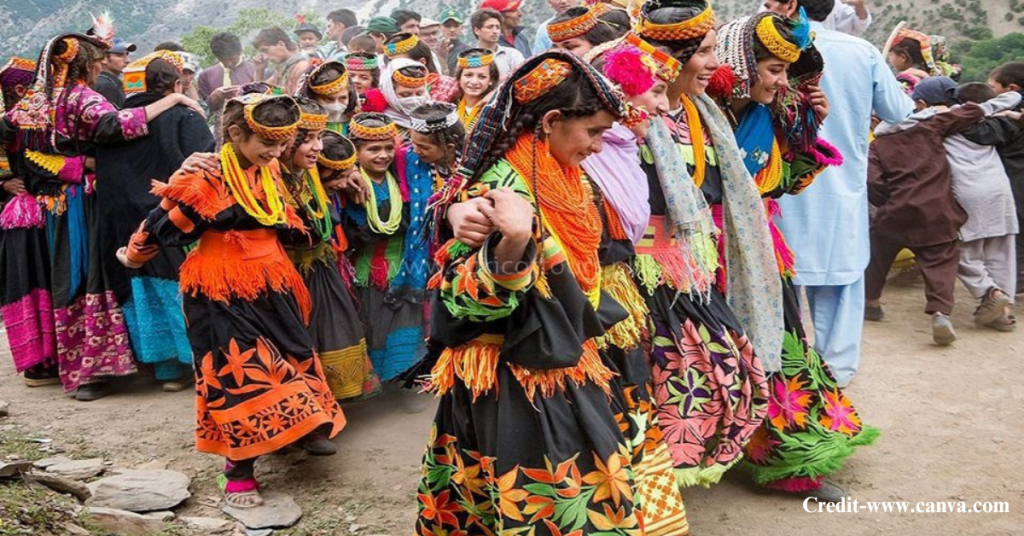
Travel Tips: How to Be a Good Guest
Do:
- Stay in Kalash-run homestays
- Ask before taking photos
- Dress modestly
- Eat local food and skip packaged snacks
- Use local guides (some trained by UNESCO)
- Help protect the Kalasha language
Don’t:
- Get drunk and loud during festivals
- Take random photos of women and kids
- Litter or damage plants
A good guest acts with respect and consideration toward other people. The Kalash people feel warm plus open, but only when they sense that a person cares. Please refrain from wearing shorts or revealing clothing.
Budget: What You’ll Spend
Item | Cost (PKR) |
Jeep rides | 200–300 per segment |
Homestay (with food) | 2,000–3,000 per night |
Tara wine | 1,000 per 1.5 liters |
Entry fee (foreigners) | 600 |
Bring cash. There are no ATMs in Kalash, and card payments are not accepted. Even Chitral has limited banking options.
What to Pack
- Warm layers (nights are chilly)
- Walking shoes
- Sunscreen and hat
- Power bank
- Zip bag for trash
- Cash (no ATMs nearby)
- First-aid kit
- A clean set of clothes for festival days
- Torch or small flashlight (some places have limited lighting)
5-Day Sample Plan
- Day 1: Travel from Islamabad to Chitral (stay overnight)
- Day 2: Jeep ride to Bumburet Valley; visit the museum
- Day 3: Move to Rumbur Valley; stay with a local family
- Day 4: Join in on a festival (if timing matches)
- Day 5: Trek around Birir Valley and head back to Chitral
This plan allows you to explore all three valleys at your own pace. You can adjust it based on the festival you want to experience.
What Makes This Travel Guide Different
- We looked at wildlife, language, and customs that other blogs miss
- You get real costs and simple packing tips
- Instead of just saying “be respectful,” we gave clear dos and don’ts
- There are no confusing words here—just easy tips
- We showed the whole picture: food, culture, beliefs, and everyday life
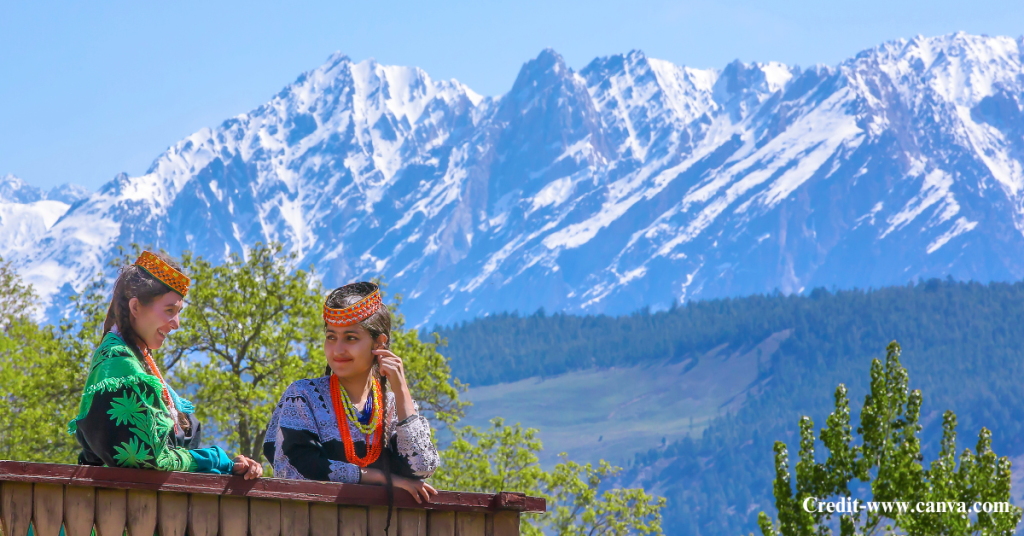
Final Thoughts
The Kalash Valley contains more than pleasant mountains – it is a place where old ways still matter. One does not just take pictures there – one takes stories home.
This land holds stories, dances, warm bread, and warm people. You will see sights that many travelers miss. You will also feel it all deeply.
When you travel with respect, you pack your belongings well. You also engage with local people. Then you take home something more valuable than souvenirs. You gain a deeper understanding of a place because most people never have that experience.

